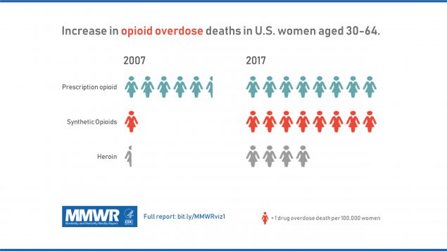Opiate Addiction Surges in Suburban America

Since the turn of the century, drug addiction statistics, overdose numbers, and addiction to pharmaceutical opioids, heroin, and synthetic opioids have all gone up. There is no question that this is a public health emergency.
One of the key strategies in tackling and reducing the opiate epidemic involves seeking to understand the crisis better. And that begins with determining which demographics are experiencing rising drug use statistics.
While drug abuse and addiction has historically been associated with impoverished Americans, the opioid epidemic has surged so much that even suburban America is now suffering from severe and even lethal drug use patterns. This occurrence has proven, once again, that addiction can happen to anyone. No socioeconomic background, no amount of wealth or status, no unique geographic location, there is simply nothing that acts as a permanent safeguard against addiction.
Here’s the silver lining, though. If it’s known and accepted that addiction can happen to anyone, proper preventive efforts and rehabilitative strategies can be utilized to protect everyone.
The Correlation Between Addiction and Poverty
It is true that drug addiction occurs disproportionately among less wealthy socioeconomic groups. This has always been the case. Even through the more recent developments in the addiction crisis (in which demographics previously unaffected by drugs were hit hard by the crisis), addiction continues to severely affect impoverished demographics.
One cannot say that addiction causes poverty, or that poverty causes addiction. But there is undoubtedly a strong correlation. And when both addiction and poverty are present in an individual’s life, each condition exacerbates the other.
When addiction and poverty appear in tandem, it’s crucial to address both problems at once. Martin Yim from the Borgen Project writes, “The question then becomes, how does a government fight poverty or substance abuse? Based on existing evidence, perhaps the best answer is that one problem cannot be adequately addressed without also attending to the other.”
But what happens when opiate addiction touches down in suburban, middle-class neighborhoods? In areas with almost no historic precedent of ever having to deal with public health problems of this magnitude?
Opiate Addiction in the 21st Century – An Epidemic that’s Affecting All Demographics
The 21st-century has seen such a severe surge in drug use trends among Americans that demographics previously not exposed to drugs are now suffering terribly from the opioid epidemic. And as the public health crisis continues to grow and affect a broader range of demographics, more people are harmed, including people from middle-class and even upper-class households.
An example of the effect this opioid epidemic has had is that the average life expectancy of U.S. white persons declined. This decline began in 1998 and followed through into the new century. An essential factor in this decline was the considerable increase of opioid overdose deaths, most of which were occurring among white demographics.
According to the Centers for Disease Control and Prevention, more than 750,000 people have died from overdoses since 1999. In most years, about two out of three fatal overdoses involved an opioid. Opioid overdose deaths have increased by almost 600 percent since 1999.
And while there is some diversity in the addiction epidemic as a general health crisis, the opiate crisis primarily affects white populations. One publication lists drug overdoses in each state by racial ethnicity, and again, the death toll is slanted strongly towards white Americans.

While overdose deaths have gone up for virtually all demographics, some population sectors have experienced this increase more severely than others. For example, from 1999 to 2017, total lethal drug overdoses among women increased by 260 percent. For opioids, in particular, the increase was much higher. From 2007 to 2017, synthetic opioid overdoses among women increased by 700 percent, heroin overdoses increased by 800 percent, and opiate painkiller overdoses went up 30 percent.
In the journal Nature, Sarah DeWeerdt writes about how suburban and rural America, white Americans, and women were taken almost entirely off-guard by the sharp increase in substance abuse cases and resulting overdose deaths, primarily because of preconceived notions about addiction. “Racial attitudes and socioeconomic trends also helped the opioid epidemic to gain a foothold in the United States. Purdue Pharma focused the initial marketing of OxyContin on suburban and rural white communities. That strategy took advantage of the prevailing image of a drug addict as an African-American or Hispanic person who lived in the inner city to head off potential concerns about addiction.”
Another study, this one by the CDC, pointed out the sharp increase in drug overdoses in white suburban households with middle-class incomes. For example, just from 2002 to 2004, heroin overdoses more than doubled among non-Hispanic whites, with some of the most prominent increases in death rates being seen among households that had an income of greater than $50,000. According to the authors, “The greatest increases in heroin use occurred in demographic groups that historically have had lower rates of heroin use: doubling among women and more than doubling among non-Hispanic whites.”
“The greatest increases in heroin use occurred in demographic groups that historically have had lower rates of heroin use: doubling among women and more than doubling among non-Hispanic whites.”
As the opiate epidemic has spread across America, affecting women, middle-class Americans, white Americans, and other demographics previously all but untouched by drug problems, the drug crisis still surges among the impoverished and the disadvantaged. The key to effectively overcoming the drug addiction epidemic in America is going to come from ensuring that all addicts, no matter their economic background, receive drug treatment.
Addiction Treatment—The Universal Answer to Drug and Alcohol Abuse
Just as addiction can affect anyone from any socioeconomic or ethnic background, so can rehabilitation help anyone who struggles with a drug problem. Drug and alcohol rehab centers offer a real and effective way out of the addiction trap.
Narconon, a residential drug treatment center, helps people get to the bottom of their addiction to find the root cause of their drug use and address it. When recovering addicts can eliminate the underlying issues that brought on their drug problem in the first place, they can finally take the first step towards a clean, drug-free life.
If you have a loved one who is struggling with an addiction to drugs and alcohol, please reach out to Narconon today.
Sources:
https://borgenproject.org/addiction-poverty-connected/
https://www.ncbi.nlm.nih.gov/pmc/articles/PMC5105018/
https://www.cdc.gov/drugoverdose/data/index.html
https://www.cdc.gov/mmwr/volumes/68/wr/mm6801a1.htm
https://www.nature.com/articles/d41586-019-02686-2
https://www.cdc.gov/mmwr/preview/mmwrhtml/mm6426a3.htm


 ®
®